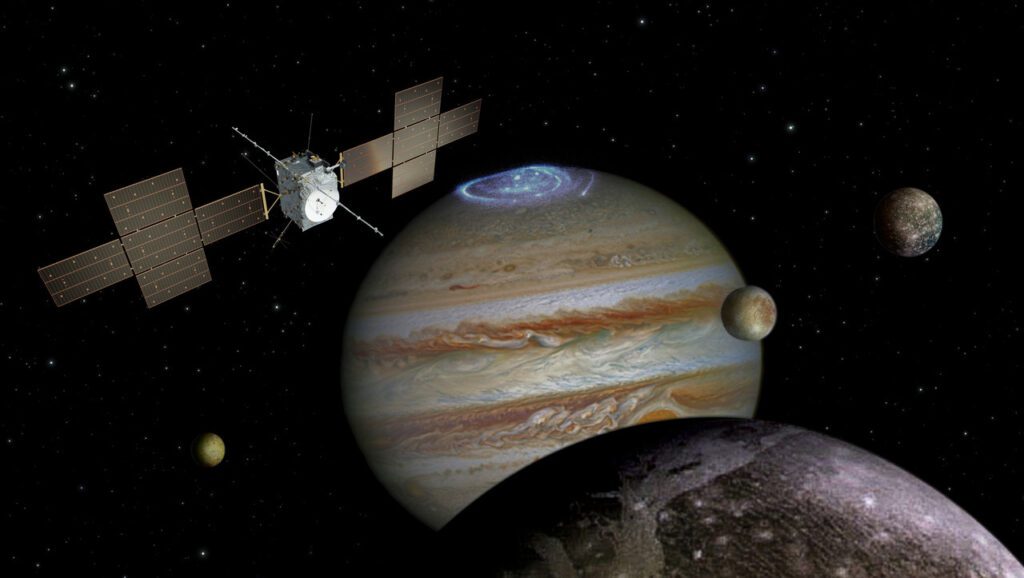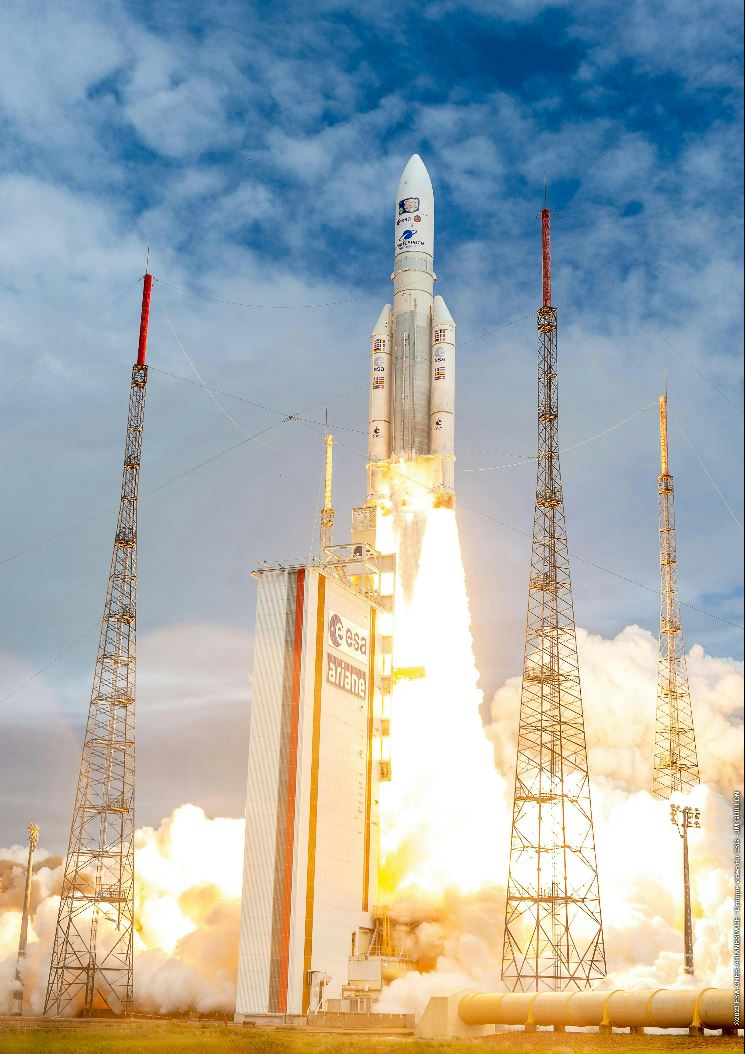After Flight VA260 was delayed by one day due to the weather, the Ariane 5 ECA+ rocket successfully launched the JUICE (JUpiter ICy-moon Explorer) spacecraft onto its interplanetary trajectory on 14 April from Guiana Space Centre, Kourou, French Guiana at 1214 GMT. Owned by the European Space Agency, the six metric ton JUICE spacecraft was built by Airbus Defence and Space.
After a long trip involving planetary fly-bys, JUICE is expected to enter orbit around Jupiter in July 2031. It will study the planet and its moons Callisto, Europa and Ganymede making detailed observations utilising a suite of remote sensing, geophysical and in situ instruments. Jupiter’s three Galilean moons are believed to have significant bodies of liquid water beneath their icy crusts, making them potentially habitable. In December 2034, JUICE will become the first spacecraft to orbit a moon other than the Moon of Earth when it enters orbit around Ganymede.

JUICE (JUpiter ICy moons Explorer), ESA’s first large-class mission in its “Cosmic Vision 2015-2025” programme, will make detailed observations of Jupiter’s Moons over at least three years. Courtesy: ESA
This is the penultimate launch of the Ariane 5 rocket with the final one expected around June 2023 with two GEO bound communication spacecraft onboard – H2SAT (HEINRICH HERTZ) and SYRACUSE 4B.
Update on 2 May 2023: It was reported by the ESA on 28 April that JUICE spacecraft’s 16 m long radar antenna has not fully deployed for the Radar for Icy Moons Exploration (RIME). A stuck pin maybe the cause and sharp manoeuvre attempts are to be made to rattle the pin free.
Update on 15 May 2023: The antenna was freed (reported on 12 May 2023). After attempts to shake and thermally free the pint, controllers fired a non-explosive actuator in the jammed bracket, the shock of which loosened the pin enough for the antenna to unfold. Another actuator fired later to complete the antenna’s deployment.
Farah Ghouri and David Todd contributed to this story.








